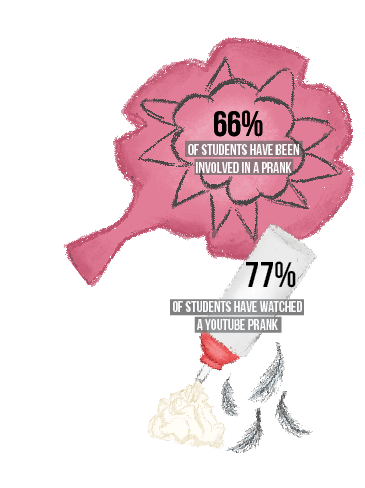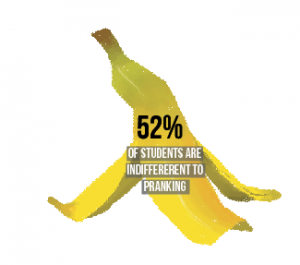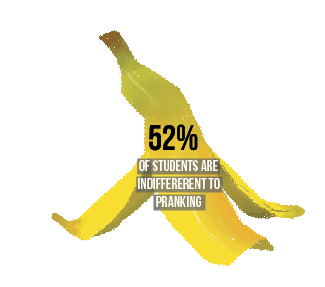Co-written by Akshara Majjiga and Bill Cheng
“It’s just a prank!”
FOR THE LAST FEW MONTHS, THIS phrase has been making its rounds across the internet. Various content creators like Youtube’s OckTV have used it as the catch-all justification for bigotry, harassment and even molestation. It’s as if they expect to be able to justify poor decisions because they’re in the name of public amusement.
Every year, Vice Principal Mike White reminds the senior class that pranks will not be tolerated at MVHS. There is no such thing as a senior prank, only acts of vandalism. Acts such as these should never be justified, and school policies should always be followed in order to keep everyone safe. While it’s true that pranks can go horribly wrong and it’s important for us to keep White’s words in mind, we don’t have to abstain from pranking altogether. Pranks can be a perfectly innocent way to build friendships and blow off some steam: as long as we make sure to use common sense and ensure that our pranks don’t harm our school or community, everything will go just fine.
Our obsession with dark humor has been common throughout history. During the ancient Roman festival of Hilaria, citizens celebrated the god Attis with various amusements, including, it is believed, pranks of all types. At the time, pranks like an elaborate masquerade were seen as acts of harmless fun as they were kept within the limits of sanity; danger was thrown aside as irrelevant, and the necessity of distraction and bonding with others was instead seen as the priority.
With the characteristics of recent pranks, it’s easy to make the assumption that pranks are only for the immature. However, simple pranks can have benefits for even the most sophisticated of us because the
laughter that they bring can encourage the release of feel-good endorphins like oxytocin that soothe the muscles and brain.
In many cases, embarrassment seems to be a major side effect of pranks. However, according to Dr. Simon Young from the Department of Psychiatry at McGill University, they may not be as scarring as we think. According to him, oxytocin increases trust in people. This shows that, socially, pranks do more good than harm. In other words, pranks are not something to be shied away from; instead, they should be employed in safe doses to strengthen  bonds and hone our sense of caution.
bonds and hone our sense of caution.
At other high schools across the country, pranks are responsible for wreaking havoc avross campuses. For example, in 2004 at Newfield HS, there was over $15,000 worth of property damage caused by the senior class, which resulted in arrests, fines and suspension of privileges. But here at MVHS, White has only witnessed minor acts of vandalism over the years. He explains that they are more expensive than anything else. It is important for us to realize that there is a zero tolerance policy for pranks for a good reason; a prank is never and should never be an excuse for an unsafe act.
Perhaps we should take the opportunity to consider the true benefits of a harmless prank and try something new. But there is a fine line between having fun and going overboard. Our goal should be to find a way to express ourselves and embrace the humor of pranks, while avoiding any true trouble or damage. It is up to us to decide if psychological and social benefits outweigh the potential consequences. As long as we stay alert and avoid any foolishness, we can only reap benefits from a little practical joke. It really can be “just a prank.”







